Restaurant Le Pasta Comedia
Kisha et Damiano sont les heureux propriétaires du restaurant ‘Pasta Comedia’. Un magnifique couple mixte, lui est italien de Latiano et elle est Burundaise de Buyenzi. Ils se sont rencontrés à Bruxelles en Belgique où ils se sont mariés et ont une belle petite fille. Un jour Damiano voulait quitter l’Europe pour exercer son métier qu’il adore en Afrique…. Lorsque l’on rentre au Pasta Comedia, c’est comme être en Italie, où l’on respecte la gastronomie et surtout la manière d’y manger ses plats. Damiano est très à cheval sur le savoir.
Interview de Kisha
Comment vous êtes-vous rencontrés?
Nous nous sommes rencontrés chez des amis en commun. Un peu plus tard Damiano m’invitait au restaurant Depuis nous nous sommes mariés et avons une merveilleuse petite fille…
Quels est votre parcours avant d’arriver à
Bujumbura ?
Damiano voulait quitter l’Europe et comme il était dans la restauration depuis très jeune et qu’il est passionné par son métier. Il était difficile, après 50 ans d’expérience, de songer à faire autre chose.
Nous n’avons pas immédiatement pensé à l’Afrique. Nous avons commencé par le Sénégal, la Tanzanie pour finalement revenir au Burundi en juillet 2009 mon pays que j’avais quitté en 1993. Notre choix de revenir au Burundi après autant d’années à l’étranger est que ma soeur et son mari qui vivaient à Londres rentraient très souvent à Bujumbura car ils y avaient un commerce depuis plusieurs années et nousavaient rassuré surtout moi parce que mon mari lui il n’avait aucune crainte, il n’avait qu’une seule chose dans la tête connaître le Burundi, j’ai pris mon courage à deux mains et nous sommes arrivés avec notre petite fille d’un an.
Comment est né le Pasta Comedia
Nous avions tout de suite entamé des recherches d’emplacements en octobre et nous sommes repartis à Bruxelles pour l’achat des équipements. A notre, nous avons aménagé le restaurant en attendant que le matériel arrive. Pour mieux accueillir notre clientèle, nous tenions particulièrement à faire une cuisine ouverte vers la salle pour pouvoir montrer ce qui se faisait en cuisine, on voulait surtout enlever ce mystère qui se trouve derrière une cuisine toujours cachée et jusqu’à ce jour, nous sommes très heureux de voir nos clients s’approcher pendant que Damiano fait les lasagnes, cannelloni, tortellini, linguines et des tagliatelles fraîches et particulièrement lorsque les enfants s’invitent à le regarder faire la izza.
Kisha de quelle région venez-vous au Burundi et quelles y sont les spécialités et avez-vous introduit quelques spécialités africaines à la carte du Pasta Comedia
Je suis née à Bujumbura, plus précisément à Buyenzi. Ce quartier de Bujumbura est très connu pour le riz Pilau, le sombe, le mandazi, les chapatis et les samboussas. Je n’ai pas pu introduire la cuisine africaine au menu du Pasta Comedia, mais il m’arrive souvent d’en faire pour moi et ma famille et par la même occasion j’en offre à mes clients qui apprécient beaucoup.
De quelle région d’Italie Damiano est-il originaire et quelles sont les spécialités qu’il a amené à Bujumbura ?
Daminao vient de Latiano dans le sud de l’Italie. Il a commencé très jeune dans la restauration. Son premier boulot était dans une pizzeria près de chez ses parents. Avec l’accord de ses parents, Damiano avec sa détermination et
son envie d’apprendre le métier est engagé, et le patron lui donne comme première taches, la découpe de la mozzarella. Damiano s’est appliqué et pendant que ses frères regardaient la télévision le soir, celui-ci vend des Panzerotti au cinéma où il pouvait regarder les films au cinéma. (Les Panzerotti sont des chaussons de pâte à pizza fraîche, farcis, et sont également appelés alors calzone, mais que l’on fait en plus frire en beignets de taille moyenne. Tout comme les pizzas, ils sont farcis avec divers ingrédients selon les saisons). La spécialité sont également les ‘orechiette aux épinards’
Quelles sont passions dans la vie à part votre profession
Nos passions sont très simples du fait que nous sommes souvent dans notre restaurant, nous aimons passés nos temps libre à la plage en commençant par aller prendre un bon petit déjeuner le dimanche. Nous aimons aller dans manger dans d’autres restaurants de la capitale. Mon mari est un vrai Tifosi du football rencontre ses amis pour aller voir ses matchs préférés, quant à moi j’aime regarder les reportages à la télévision, les émissions de relooking… 16, Avenue de la Plage Bujumbura, Burundi +257 76 28 54 81
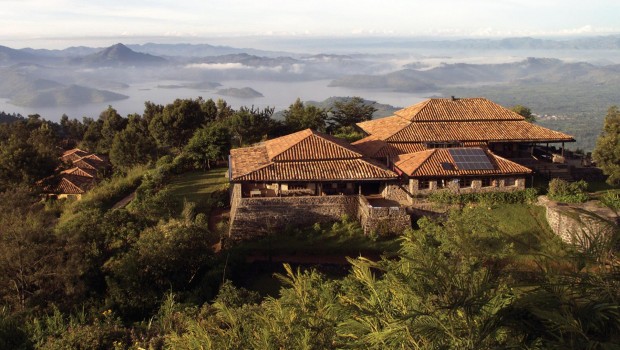
The Luxurious Virunga Lodge, Rwanda
The magnificent Virunga Lodge is perched high on a ridge offering breathtaking views of the Virunga Volcanoes and the shimmering twin lakes of Bulera and Rhonda. It is the premier luxury destination for Rwanda wildlife safaris and tracking the endangered mountain gorillas. Virunga Lodge includes two spacious deluxe bandas and has frequently been described as having ‘the best view in the world’ and as ‘one of the finest lodges in Africa’. The main building, sitting on top of the world, provides a cozy refuge to enjoy a drink around the fire. The lodge’s mature
terraced gardens and the magical sunken paradise garden are hosts to an array of beautiful wildflowers, which attract a wide variety of birdlife that can be enjoyed on one of our birding tours around the lodge.
Five of the eight luxurious bandas (rooms) have recently been refurbished, each with its own fireplace, African interior design, and private terrace with breath-taking views of the Virunga Volcanoes and the twin lakes. Sensitive installations such as solar power ensure guests enjoy luxurious comforts while maintaining a crucial sensitivity to the environment.
A stay at Virunga Lodge offers a diverse variety of activities that you can do in the Volcanoes National Park Rwanda. Visitors can choose from: Watch a traditional Rwandan Intore Dance performance at the lodge, and visit the Mwiko primary school. Track the endangered mountain gorilla in the Parc National des Volcans – a truly unforgettable experience, hike to Dian Fossey’s grave, track the golden monkeys, climb Karisimbi and Visoke Volcanoes, walk to Lake Bulera, and visit lake Kivu and the Imbabazi Orphanage.
Private helicopter transfers can be arranged from Kigali International Airport direct to the lodge. Arrive in style, and enjoy some of the best aerial views of the Land of a Thousand Hills.
For an extended stay, cross over to Mount Gahinga Lodge, nestled in the foothills of the Virunga Volcanoes. An exclusive Ugandan adventure lodge that has the impressive backdrop of three of the volcanoes themselves, its rustic charm creates an absorbing atmosphere of tranquility and history.
Mount Gahinga Lodge offers a variety of activities for guests such as; golden monkey tracking, birding, hiking the volcanoes, Batwa trail, and mountain climbing. Clients can also enjoy the Volcanoes Safaris Partnership Trust community-based projects like the Batwa dance performance, Batwa Vocational Center, Batwa Cultural Heritage Experience, and the Batwa Settlement visit.
Book your safari now and contact one of our sales team for more information today on salesrw@volcaneossafaris.com, or call +250 778 302 069
Read More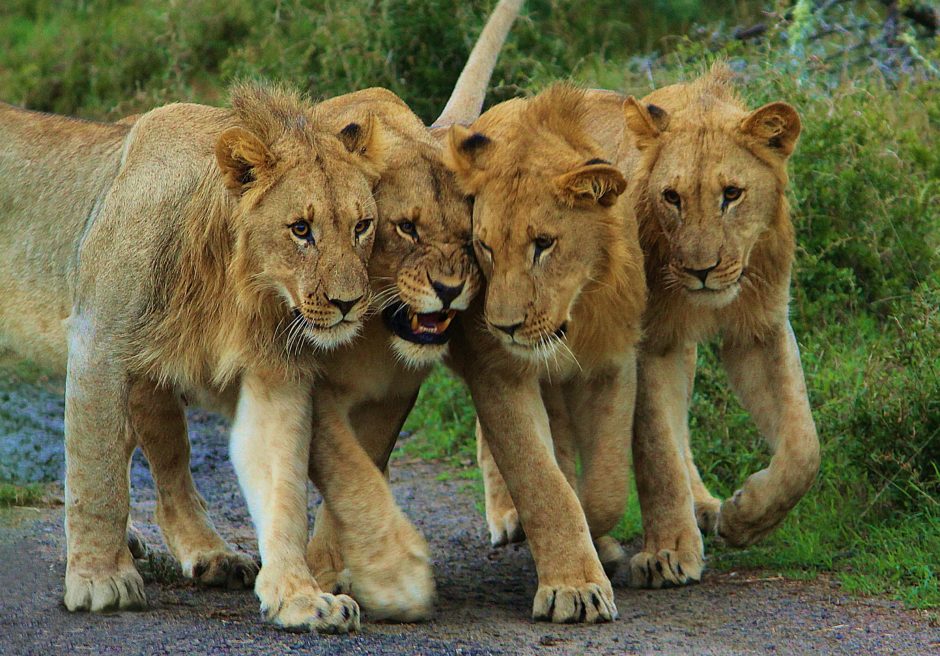
The king of the jungle is back!
More than 20 years after they were last seen in Rwanda, lions are finally back in the country’s Akagera National Park. The majestic beast fondly referred to as ‘The King of the Jungle’ was wiped out following the country’s 1994 genocide against the Tutsi. On 29th June this year, conservationists and animal lovers had reason to rejoice as seven lions- two males and five females – were transported from South Africa and arrived by air in Rwanda after a 36-hour journey. Afterward, they were slated to be released after at least two weeks quarantine into the eastern Akagera National Park.
Park officials in Akagera, a 112,000-hectare park bordering Tanzania, said the reintroduction was “a ground-breaking conservation effort for both the park and the country of Rwanda.” “It’s a breakthrough in the rehabilitation of the park,” said Yamina Karitanyi, head of tourism at the Rwanda Development Board.
“Their return will encourage the natural balance of the ecosystem.” The lions are from parks in South Africa’s KwaZulu-Natal province, from “relatively small, confined reserves where it is necessary to occasionally remove surplus lions.
The seven were chosen “based on future reproductive potential and their ability to contribute to social cohesion”, with animals including a mix of ages and genetic makeup. According to the International Union for the Conservation of Nature, the lion remains listed as vulnerable at a global level.
The rapid decline has been recorded in eastern Africa, which historically has been a stronghold for lions, IUCN said. “The return of lions to Akagera is a conservation milestone for the park and the country,” said Peter Fearnhead, head of African Parks, which helps run Akagera.
The park is fenced, but the cats will be equipped with “satellite collars” to reduce the risk of them entering inhabited areas. “The collars have a two-year life, by which time the park team will have evaluated the pride dynamics and only the dominant individuals in each pride will be recollared,” the park added.
Akagera offers plenty of food for the top predator and is home to multiple antelope species, buffaloes, giraffes, and zebras, as well as leopards and elephants. Located two hours by road from the capital Kigali, it is an important tourist destination, with some 28,000 visitors in 2014.
Read More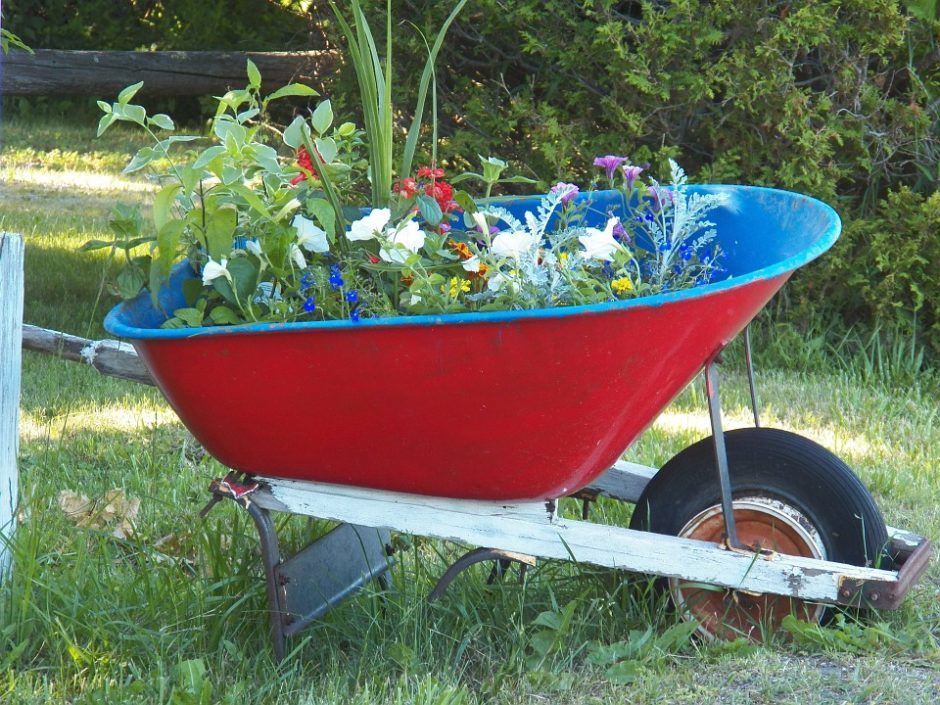
Audry’s Garden
par Nadia Nehari
Audry-Kévin Jimbere est un jeune Burundais qui crée son propre emploi en créant sa société de service ‘Audry’s Garden’ consacrée au jardinage….
TEM : Quel âge as-tu Audry-Kévin et quel est ton cursus?
Audry : Je viens de terminer mes études dans la faculté de Gestion et Administration (Business and Administration).
TEM : Comment t’es venu l’idée de créer une société de Service à Bujumbura tel que Audry’s Garden?
Audry : L’idée m’est venue quand j’ai vu que certaines résidences et habitations avaient de grand jardins et qu’ils étaient difficiles à entretenir et à embellir. C’est là où je me suis m’y à réfléchir comment apporter une solution pratique pour l’entretien de jardin. J’ai constitué une équipe avec mon propre jardinier et vu les résultats positifs et la demande croissante et l’encouragement des clients, j’ai crée la société de service ‘Audry’s Garden’ qui est composée de plusieurs personnes (femmes et hommes) à qui j’ai donné un emploi. Une maison et un jardin bien entretenu est l’image de la personne qui y habite, pour moi il est très important de vivre dans un bel environnement et entouré de la nature dans sa maison… Le Jardin!
TEM : Quel est le conseil que tu donnerais aux jeunes burundais de ton âge dans leur recherches d’emploi?
Il y a beaucoup de choses à faire au Burundi. Je pense que vu le taux de chômage élevé dans notre pays. Les jeunes comme moi devons nous mettre en tête de créer notre propre emploi! Il faut juste aimer le travail et s’y consacrer à fond et y donner tout son cœur! C’est cela notre avenir!
J’espère qu’avec le projet que j’ai mis en place je servirai un modèle pour les autres jeunes car j’ai eu le courage de me lancer et j’’ai réussi à créer mon propre emploi.
TEM : Quel est ton/tes passes temps favori(s) à part le travail et comment l’utilises-tu?
Je suis une personne très sociale, j’aime passer du temps avec mes amis. J’aime aussi le business- cette passion, je la porte dans mon cœur…
Contact: jimberea@yahoo.fr Tél: +257 78808359
Read More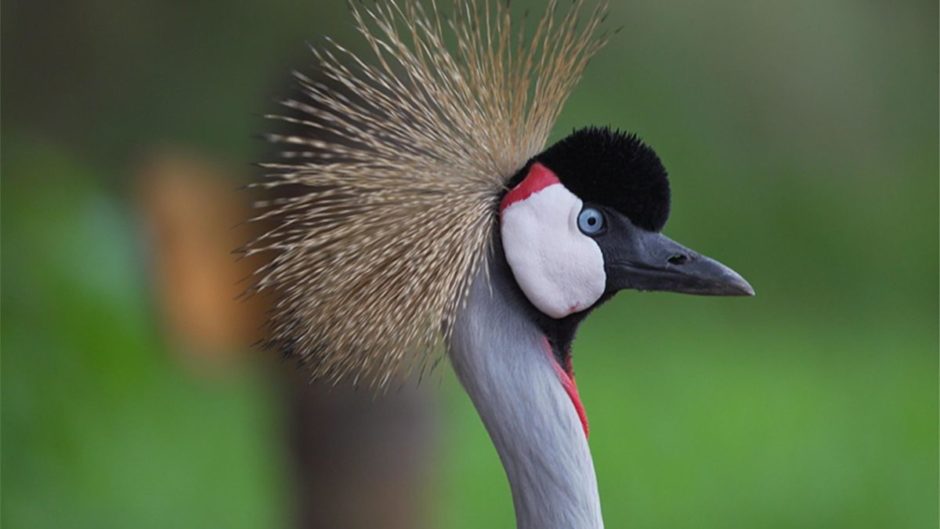
Securing the Future of Rwanda’s Crowned Cranes
A symbol of hope for the future of the Grey-crowned Crane population in Rwanda; 3 chicks were born in Akagera on Christmas day. A new generation who, thanks to the Crown Crane rehabilitation program, have been born free.
The wild population of Grey-crowned Cranes in Rwanda has been estimated at as few as 200-300, but there may be an equal number, if not more, in captivity. Veterinarian, Dr. Olivier Nsengimana, has been the driving force behind the program, working closely with RDB and Akagera Management Company, aiming to rehabilitate captive populations and return them to the wild.
The sad plight of the Grey Crane
Grey-crowned Cranes are statuesque birds and, as they are believed to be a symbol of wealth and prosperity, are now more commonly seen as ornaments in domestic gardens than in the wild. Many of these domesticated birds have had their wings clipped, or even broken so that they cannot fly away. They do not readily breed in captivity, so each captured Crane is not just a loss of one from the wild population but affects subsequent generations. Without intervention, we could easily see the demise of Rwanda’s wild Crane populations in just a few years.
RDB, Akagera come to the rescue
Early in 2014, RDB announced an amnesty whereby people and businesses in Rwanda could surrender their captive Grey-crowned Cranes and avoid prosecution for illegally possessing endangered wildlife. Through the amnesty, in Kigali city alone, almost 150 Cranes have been registered and 130 are already tagged with identifications bands on their legs. 42 of these spent six weeks in a quarantine facility in Kigali and 36 were moved to a purpose-made fenced facility near the park headquarters in Akagera National Park in January as ‘soft release’, allowing the Cranes to become accustomed to their surroundings before they chose to fly. If they have had their wings clipped, it can take between 6 months and 3 years before they are ready to fly. The program is a long-term initiative, a step-by-step process of sensitization, registration, tagging, assessment of their suitability for release and quarantine for diseases.
Within the relative safety of the fenced park headquarters, and with extremely protective and attentive parents, we are hopeful that all three chicks born in Akagera will survive and eventually fly.
How can you help?
If you happen to see a crowned Crane in the wild, look to see if it has a ring on its leg and record the number. Keeping track of the birds and any sightings will be valuable information for the program in the future. And if you have, or know of any, Crowned Cranes in gardens or hotels in Rwanda please contact the relevant authorities below.
Any Cranes found without identification tags after the amnesty period will be considered recently poached and the owners liable for prosecution which could see them fined for between 500,000 – 5 million Rwandan francs. Not all Cranes will be suitable for release but all captive Cranes must be registered and tagged.
Read MoreLe Dr Leyla Ouici : Une praticienne aux doigts d’or
Le Dr Leyla Ouici est une praticienne aux doigts d’or. Après un parcours dans la médecine classique et hospitalière, celle-ci décide de faire un retour vers les médecines douces que sont la médecine chinoise et l’homéopathie.
En quelle année avez-vous commencé à étudier et à exercer l’acupuncture, l’homéopathie et pourquoi?
J’ai commencé à me réorienter vers ces médecines douces en 1986 car je trouvais que les médications administrées aux patients pour certaines pathologies ne nécessitaient pas de médications agressives. Je me suis fortement intéressée à la médecine chinoise car pendant mon enfance en Algérie les médecins chinois obtenaient de très bons résultats dans les soins qu’ils pratiquaient et avaient d’excellents cas de guérison. Ce souvenir encré dans ma mémoire, m’a encouragé à suivre le chemin de cette médecine! Pour ce qui est de l’homéopathie, je perpétue simplement la tradition de mes ancêtres qui n’utilisaient pas de médicaments et je l’ai approfondie professionnellement grâce à mes études et mes recherches en homéopathie. En 1986, j’ai commencé mes études à l’Institut Internationale de Médecine chinoise et en parallèle je suivais mes études auprès du très célèbre Professeur Jean-Marie Danze (Laboratoire UNDA). Dès l’obtention de mes deux diplômes, j’ai immédiatement ouvert mon cabinet et mes patients ont fortement adhérés à ces nouvelles formes de soins, qui leur ont été très bénéfiques et ils en sont encore très ravis.
En quoi consiste l’Acupuncture?
Elle consiste à insérer des aiguilles réparties sur des points précis du corps dont le but est de produire des effets positifs sur l’organisme. L’acupuncture a pour objectif d’équilibrer toutes les fonctions du « QI », autrement dit de l’énergie. Dans la médecine chinoise, si le QI est harmonieux, la maladie ne peut pas s’installer dans le corps!
Quels sont les 5 éléments en Médecine Chinoise?
Les Chinois de l’Antiquité croyaient que toute chose dans l’Univers était une manifestation des cinq Éléments (Bois, Feu, Terre, Métal et Eau) et que le corps humain était un microcosme de l’Univers. Par conséquent, les lois gouvernant la Nature étaient également applicables à l’homme et, au niveau du corps, chacun des cinq Éléments était associé à un système ou organe(s), des sens, émotions, une propension à certains maux ou faiblesses et une certaine orientation envers la vie. Dans le cadre du système des Cinq Éléments, l’examen physique et l’histoire de la personne permet au praticien d’établir un diagnostic. Ceci permet d’identifier l’élément qui, soumit à un stress interne ou externe, se trouve en déséquilibre, ce qui facilite le développement de troubles ou maladies. Le traitement qui en résulte est adapté à chaque individu et prend en compte l’âge, les symptômes, la constitution ainsi que les circonstances de vie de chacun. Le but de l’Acupuncture Cinq-Elément est de traiter le déséquilibre initial, et les effets du traitement se traduisent souvent par, non seulement la disparition des symptômes, mais aussi d’un meilleur état de bien-être, plus d’énergie et de vitalité, une meilleure confiance en soi, un sommeil plus réparateur, ou même une approche plus positive de la vie.
Qu’est-ce que le Ying et le Yang?
Le Ying et le Yang sont deux forces fondamentales, opposées, complémentaires, indissociables, interdépendantes, qui expliquent la manière dont les choses croissent, décroissent, se transforment mutuellement puis meurent. Le Ying est associé à l’ombre, la lune, le froid, l’hiver, la nuit, au nord, à ce qui est caché ou couvert. L’eau est froide, de nature Ying, et a une direction descendante. Le yang est associé à la lumière, au soleil, à la chaleur, à l’été, au sud, à ce qui est visible ou découvert.
Le feu est de nature Yang, s’enflamme, et a une direction ascendante. Le Ying et le Yang s’opposent. Ils n’existent et s’opposent que relativement l’un par rapport à l’autre (chaud-froid, jour-nuit, etc.). Le Ying et le Yang sont interdépendants
Ils ne peuvent exister l’un sans l’autre, ce sont les deux aspects d’une même réalité (pas de jour sans nuit, pas de lumière sans obscurité, etc.)
Dans le corps humain, la théorie du Ying-Yang s’applique aussi. Lorsque l’individu est en bonne santé, le Ying et le Yang sont en harmonie, et dans un équilibre harmonieux et dynamique. Lorsqu’ils sont en déséquilibre, s’ensuivent des pathologies, des maladies.
En quoi consiste l’homéopathie?
L’homéopathie est une méthode thérapeutique très douce qui ne présente aucun risque pour l’organisme. En conséquence, les médicaments utilisés sont dénués de toute toxicité, de toute contre-indication et de tout effet nuisible pour la santé. Mais puisqu’il s’agit avant tout d’un traitement à visée thérapeutique, il convient toujours de bien respecter les doses prescrites ainsi que les précautions d’usage habituelles de sorte à obtenir de meilleurs résultats. L’homéopathie est une méthode thérapeutique naturelle grâce à laquelle il est possible de soigner une multitude de pathologies différentes. Elaborés dans le plus grand respect de la nature et du corps humain, ces médicaments peuvent être pris par tous, sans distinction d’âge ou de sexe.
Vous allez vous installer votre autre cabinet à Bujumbura. Pourquoi ce choix?
Suite à une visite au Burundi l’année dernière où j’ai rencontré plusieurs médecins de différents horizons avec qui nous avons échangé nos points de vue et nos idées, ceux-ci étaient fortement intéressés par mes compétences et m’ont demandé d’apporter mon expérience ici à Bujumbura et en Afrique. J’ouvrirai mon cabinet en février 2015. N’hésitez pas de me contacter par courriel pour connaître la future adresse de mon cabinet et pour toute autre question liées aux soins en médecine douce. Je me ferais un plaisir d’y répondre en attendant de vous recevoir dans mon cabinet.
Pour vos rendez-vous ou vos questions:
Tel: +257 75 550 560 / +32 486 33 69 32
institutdemedecinechinoise@gmail.com
Read More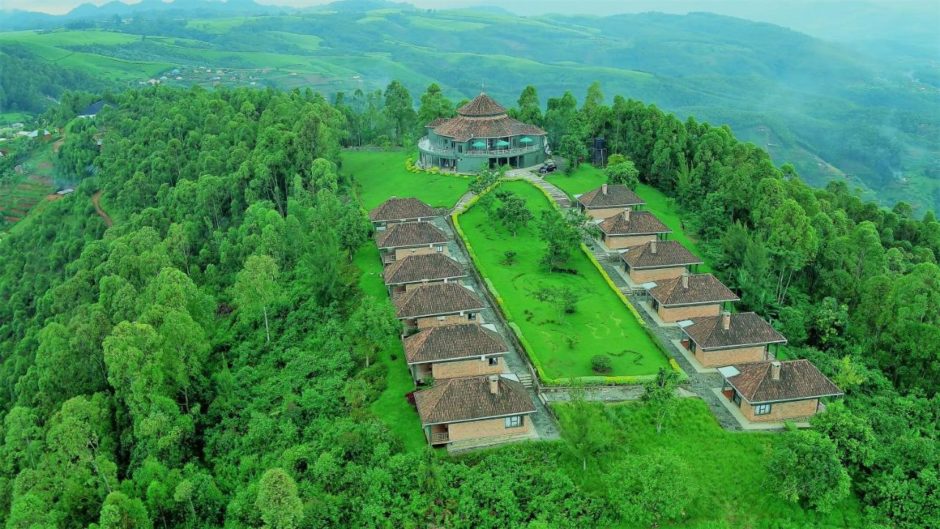
A Rwanda Lodge’s 5-Star Recipe For Success
Mr. Jerry O. Were is the General Manager of Nyungwe Forest Lodge. Located in the South Western Province of Rwanda, within Nyungwe Forest National Park, it is the only 5-star lodge in Rwanda.
Jerry was hosting some guests at the lodge when he received amazing news: Nyungwe Forest lodge had just been nominated “Best new safari property” in CNN’s prestigious 2015 Safari Awards. Dubbed ‘The Oscars of the travel Industry’, the awards are the highest honor for any hotel.
We sat down for a chat with Jerry and he shared with us the secrets that make Nyungwe Forest Lodge tick.
TEM: Let me start by congratulating you on Nyungwe Forest Lodge’s nomination for the CNN Safari award…
Jerry: Thank you so much. We give the glory to God!
TEM: It seems to be award after the award for Nyungwe Forest Lodge. How do you do it? What is the secret recipe for your success?
Jerry: Actually, ours is simple. We take care of the basics. At the foundation of our structure is a 4-pronged approach, which a lot of people may not be willing to accept as an official strategy, but it has worked for us: First, the investor did a great job in making sure the property is top-notch. Next are the structures: you must have the right structures in place to enable you to get excellence. The third is your staff- treat your staff like Kings and queens, and they will treat your clients like royalty. Finally, put God first in everything.
TEM: After taking care of the basics, how can one stand out enough to be recognized as extraordinary?
Jerry: Pay attention to the small details. It is the smallest things that make the biggest impression. In the area of service, a good way to do this is to anticipate the guest’s needs even before they ask. For instance, say it’s at the restaurant: if someone orders fries, they don’t have to ask for salt, ketchup, mayonnaise, etc. These are things that should be thought of and provided with the food. Other ways you can make the experience memorable for the guest is to be courteous all the time- smile, and remember their names, their order preferences, and so on. The best part is that these are habits that you can make a part of the procedure as you train your staff until they perfect the routine.
TEM: Tell us about the facility itself. Is there anything about Nyungwe Forest Lodge- the physical property itself- that makes it a must-see destination?
Jerry: A number of things. Actually, Nyungwe forest lodge should be at a disadvantage because we are located in one of the remotest parts of the country, in the middle of nowhere; I mean we are in a mountain-forest!- but we have people lining up to visit the lodge all year round because the lodge itself is an experience!
One unique thing about us is, we are an eco-lodge; and with the current emphasis on environmental conservation and being green, this aspect of Nyungwe attracts many people. Everything in Nyungwe Forest Lodge, from construction to management is eco-friendly. In fact, we are the only lodge in East Africa that is Greenleaf certified. Secondly, the way the project was conceived allows for some memorable experiences. For instance, we’ve created the rooms in such a way that from your balcony, from your bathtub, you can enjoy a view of the forest. Something else you may find attractive: you come to our tea lounge, and the chandeliers themselves have been made from tea sieves! The attention to detail is simply amazing. No wonder guests have nicknamed Nyugwe Forest Lodge “Rwanda’s Garden of Eden!”
TEM: What is the most memorable experience guests to Nyungwe Forest Lodge will carry away? What will they rave about to their friends and relatives back home?
Jerry: The unmatched encounter with nature. 100% natural experience, no filters. You will see birds here that are nowhere else in the world. From your balcony, the monkeys will come so close that you can observe and try to identify over 14 different types of monkeys.
But most memorable of all is our Tea-ceremony: Nyungwe Forest Lodge owns a tea plantation that is run by the locals as part of our Corporate Social Responsibility. They look after it, harvest it when it’s ready and take it to a nearby tea factory, and get paid; all the money from the tea goes direct to the local residents’ pockets.
Now, at some point during your stay at the lodge, you will be given the opportunity to take part in a unique ceremony. First, you will be given a kit and taught how to handpick the tea; after that, you will take it to the factory and then in the evening we have a tea ceremony where you can sample the tea you picked. Understanding how it all came about from start to finish makes it such a powerful experience. For most of our guests, this is the highlight of their stay.
TEM: OK, say you’ve won us over. We want to visit the lodge. What is the best way for a guest to “arrive in style” at Nyungwe Forest Lodge?
Jerry: (laughs) Arrive by helicopter. We have two helipads, and a chopper, so the most stylish way you can arrive in Nyungwe is to be choppered in.
Read MoreClues of Quality from a Guest’s Perspective
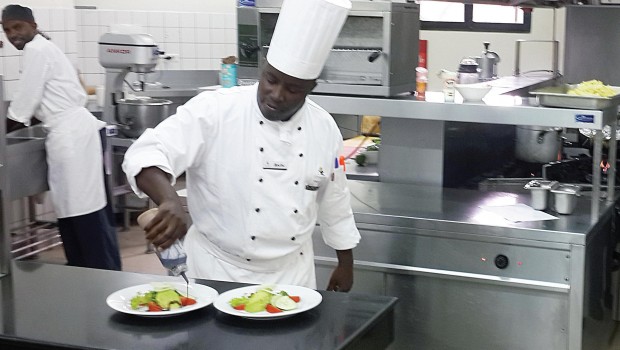 The words QUALITY HOTEL are always on everybody’s mind whenever they are planning for a vacation or a business trip. The following tips are meant to help hotel keeper’s fit the bill and join the league of quality hotels. Experienced travelers are very good at picking up clues of quality from the curb of the hotel to the corners of their rooms, so make sure you have paid special attention to the key areas mentioned in this column.
The words QUALITY HOTEL are always on everybody’s mind whenever they are planning for a vacation or a business trip. The following tips are meant to help hotel keeper’s fit the bill and join the league of quality hotels. Experienced travelers are very good at picking up clues of quality from the curb of the hotel to the corners of their rooms, so make sure you have paid special attention to the key areas mentioned in this column.
Curb Appeal – This refers to how attractive your hotel looks from the outside. Your guests’ first impression of your hotel is critical, beginning long before they get to your curb and continuing right up to your door. From travel guides and websites to signage, lighting, and landscaping, creating quality curb appeal will bring customers into your hotel.
Staff – Your staff should be well-groomed, friendly, responsive, and polite. Putting on clean, well-pressed uniforms and good quality nametags form an important part of staff grooming and should be emphasized. Special attention should also be paid to the hair.
Cleanliness – A minimum expectation of every guest, cleanliness requires extra effort and attention to detail. It goes without saying that every room should be cleaned as often as is needed. But, for excellence, go the extra step to clean above, behind, and underneath every article in the hotel, as well as in the corners. Pay special attention to the bathroom, where bright, hard surfaces and mirrors make quality easy to see.
Comfort – Your guests expect quality furnishings, fixtures, and amenities to make their stay enjoyable. Planning and communication are vital to keeping your public areas and guestrooms functioning, modern, and clean. Provide quality in-room amenities and pay special attention to “guest touch” items.
Service – Your personal contact with the guest can create positive memories and capture future business. From a fast, friendly registration to helpful service during the stay to show your appreciation at check out, make the most of every guest service opportunity.
Problem Resolution – Because quality is in the details, occasionally you’ll slip up. But a guest problem is actually an opportunity to earn their business for the long term. Practice problem resolution strategies such as listening, empathizing, apologizing, creating solutions, and following up.
Quality is in the details, and everyone who works at your hotel needs to be part of the quality team.
Remember, “You never get a second chance to form a first impression, so make it count!”
Read More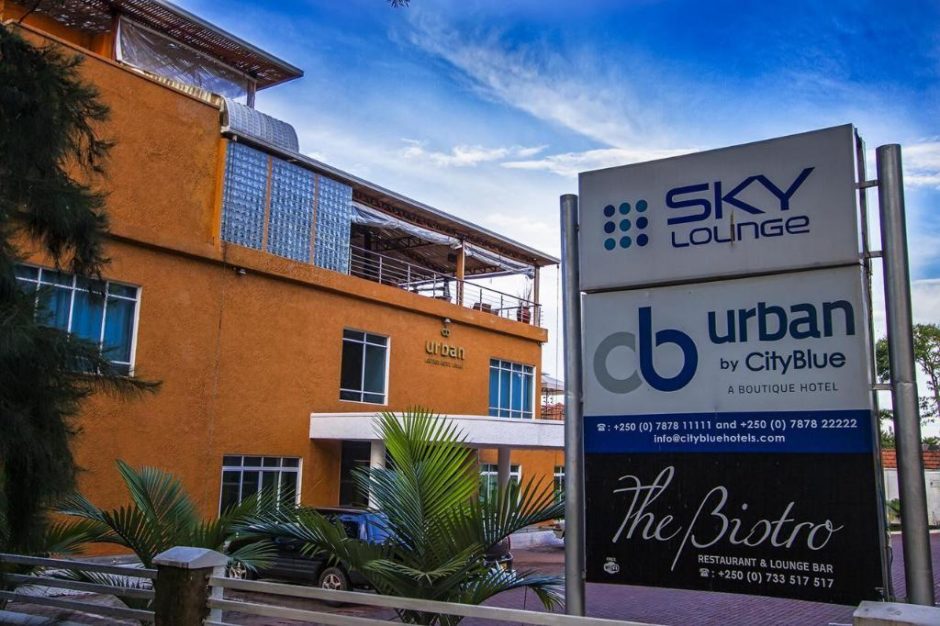
Sky Lounge Now Open at Urban by CityBlue Hotel, Kigali
There is a new, exciting option now available in Kigali’s ever-growing night scene: Sky lounge, at Urban by CityBlue Hotel in Kiyovu.
The rooftop lounge offers an amazing view of the Kigali city skyline and is just above one of Kigali’s top restaurants, The Bistro. Sky Lounge is a perfect spot for cocktails, special moments, and is ideal for champagne toasts and themed nights.
Space is a blend of chic and attention to detail reflected in the design and the menu. It is the perfect place to start your night by enjoying great food, drinks, and music.
The official launch was on the 10th February 2015 with an “intimate” cocktail party graced by a number of dignitaries and some of the key business people in Rwanda.
For a taste of a unique CityBlue Experience, Sky Lounge is definitely is worth a visit.
Read More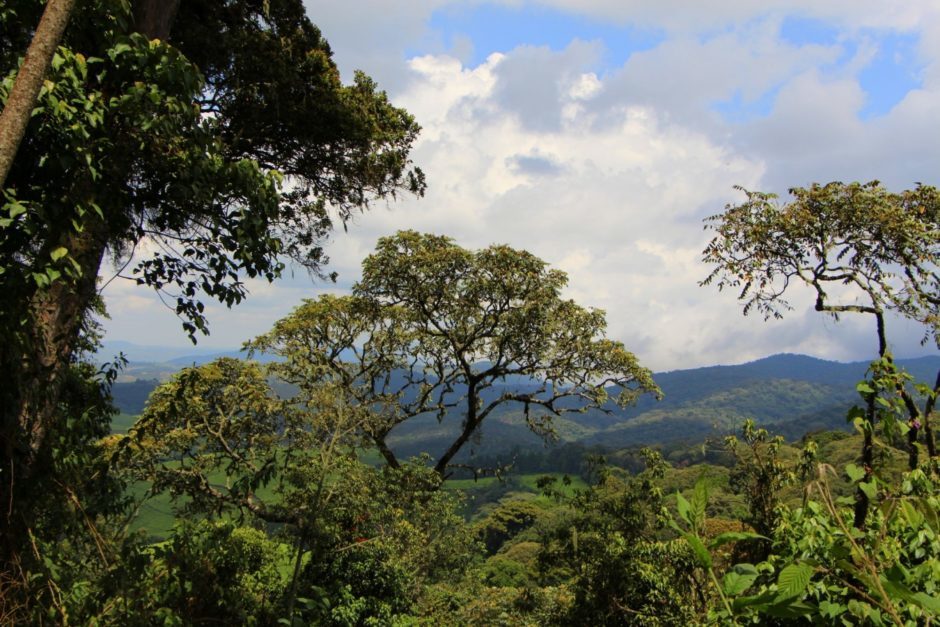
Kibira National Park in Burundi
The Kibira National Park is a national park in northwestern Burundi. Overlapping four provinces and covering 400 km². Kibira National Park lies atop the mountains of the Congo-Nile divide. It extends north from the provincial town of Muramvya to the border of Rwanda where it is contiguous with the Nyungwe National Park. It is estimated that around 16% of the park consists of primary montane rainforest, and is adjacent to two large tea plantations, one in Teza and the other in Rwegura. Dominant tree species include Symphonia globulifera, Newtonia buchananii, Albizia gummifera, and Entandrophragma excelsum.
The forest contains areas of montane bog and bamboo stands. The Kibira is home to a number of primate species, including chimpanzees and black and white colobus monkeys, and boasts over 250 species of birds, including the majestic Great Blue Turaco. The park is managed by the Institut National pour l’Environnement et la Conservation de la Nature (INECN).
Until 1933, this forest was a hunting reserve of the Kings of Burundi.
The local people respected the forest, investing it with magical power. Rights of use for livestock grazing and the gathering of forest products were recognized. The sacred character of the forest, even prior to the colonial era, helped to conserve it. Between 1933 and 1980 Kibira was classified as the Congo-Nile Ridge Forest Reserve, first under Belgian rule, then after Burundian Independence in July 1962.
Only the extraction of high-value timber was regulated and controlled. Between Independence and 1980, the right to allocate new land for cultivation within the defined boundary was abolished, although grazing rights were retained. Despite its status as a National Park, there is much pressure on parts of the forest as a result of felling of trees and cutting of bamboo, fire, and poaching, and encroaching subsistence agriculture.
Perched on the top of Congo-Nile ranges, between 1550 and 2660m of altitude, Kibira park is a majestic primeval rainy forest covering 40,000hectares. Former sacred hunting reserve for the kings of Burundi, it is today instituted a protected area and is habitat to some 98 mammal species, a dozen of primates (numerous families of chimpanzees, baboons, tailed monkeys, black colobus), but also some 200 species of birdlife.
Many streams and rivers that irrigate the country in the east as well as in the west have got their sources in this park. This rainy forest plays a major role in the formation of the basins of Congo and Nile Rivers of which it constitutes the watershed line. It is also one of Mugamba regions with the highest rainfall in the country.
Although it has not been visited since the war, this park became long ago a tourist attraction very appreciated by visitors: led by guards of the park, tourists would go deep in the dark undergrowth to discover the charms of the primeval forest, with all along the way, fantastic melodies of birds. To access the park, you pass through huge tea plantations of Teza and Rwegura, which constitute already charming attractions.
At the moment, it is possible to reach inside the park via the tourist pygmies’ village of Busekera, but also at the level of the hydroelectric dam of Rwegura, another tourist curiosity with magnificent vista, favorable to rest and an outdoor picnic.
Read More